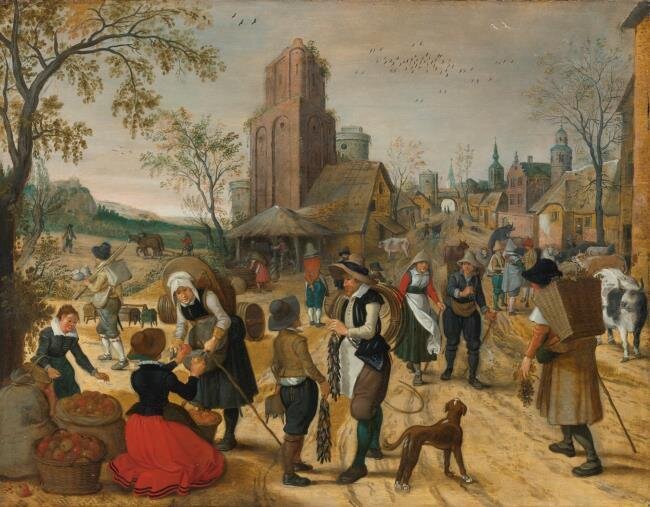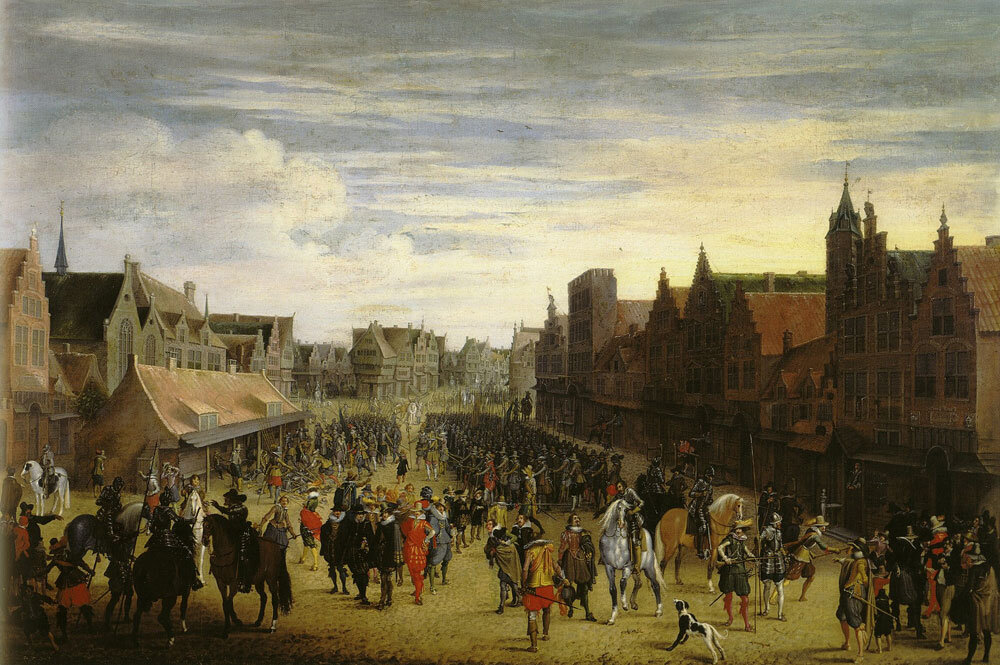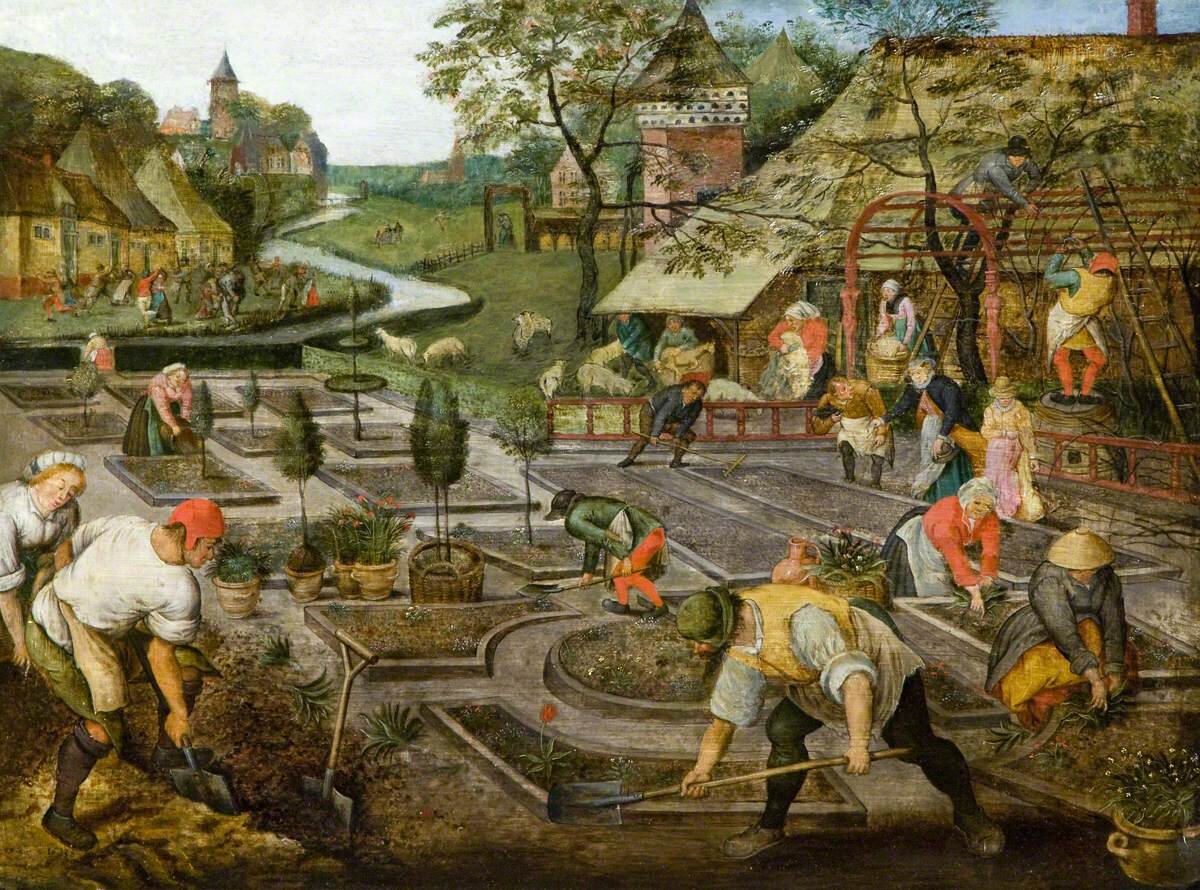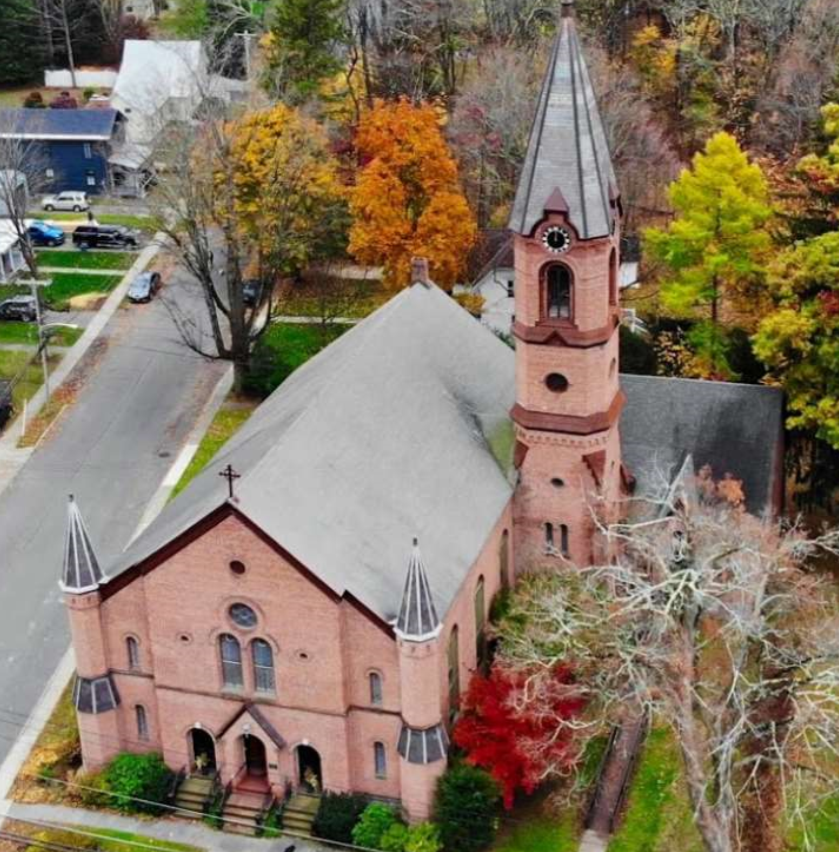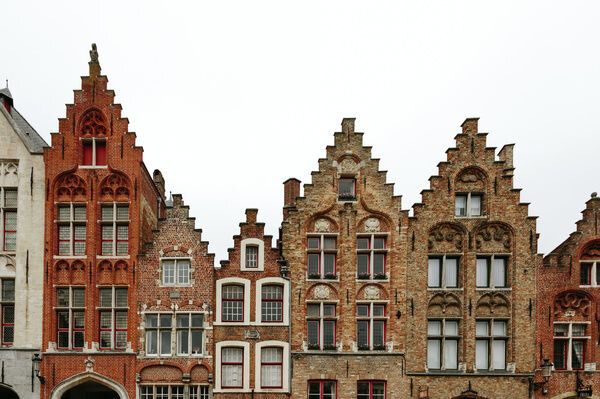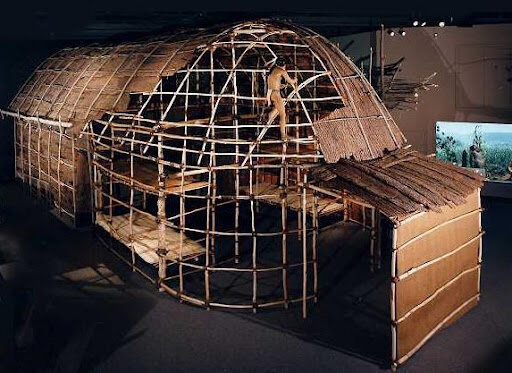Keep up to date with Historic Albany Foundation
The Legacy of Dutch Architecture in Upstate New York
/Defining Dutch Colonial Architecture
The term “Dutch Architecture” is one that is not easily defined. What exactly makes up “Dutch Architecture” is a controversial subject that is debated by historians and architecture professionals alike. It can be difficult to pinpoint “exclusively” Dutch, or English design qualities in buildings and other structures, especially those that exist today from the period after the settling of New Netherland (the modern day East Coast of the US).
The ‘American’ Porch
One debate is whether or not the Dutch introduced the Porch in New Netherland. Historian Joseph Manca, a professor of Art History at Rice University, addresses the issue of defining the Dutch style and the contributions the Dutch made to architecture and design in his work. In “On the Origins of the American Porch Architectural Persistence in Hudson Valley Dutch Settlements,” Manca addresses the lack of scholarly attention to the contributions made by Dutch craftsmen in the Early American period.
Some historians have argued that the Dutch drew inspiration from the English in their design of the porch. However, looking at the historical record left behind by Dutch artists dating back to the Early Modern period, a tradition of porch building is evident. Manca notes that porches can be found in the architectural record of a variety of cultures and geographical regions across the world. The porch is a universal structure.
Thus it can be argued that a variety of people and cultures contributed to the design of the “American” porch in Early America. Native people in Upstate New York, like the Mohawks of the Iroquois nation, built porches on their longhouses to provide shade for duties performed outdoors. In Dutch structures, the porch was utilized for both social and work purposes. Many aspects of Dutch architecture were brought over to the New World from the Old one, including the porch. Other features that can be seen in the artwork from the Netherlands include gabled and steeped gable roofs and tinder frame structures.
Picture One: A scene of an Autumn Market by Sebastian Vrancx. Circa 1595.
Picture Two: A depiction of Utrecht by Pauwels van Hillegaert, 1622.
Picture Three: Pieter Brueghel II’s Depiction of Spring, 1565.
“Manca notes that porches can be found in the architectural record of a variety of cultures and geographical regions across the world. The porch is a universal structure...”
Dutch Architecture in the Old & New World
Aspects of Dutch culture were present in numerous other ethnic communities in the Old World. Dutch traditions were not only present in the Netherlands, but also in Belgium, northern France, and western Germany. The close proximity of these nations allowed for a spread of customs, ideas, religious beliefs and various modes of artistic expression and technique, including architecture. Other ethnic Europeans that share architectural similarities with the Dutch include the Flemish, Walloons, French Huguenots and Palatine Germans.
As such, the style remains difficult to define in a cultural sense as it is made up of a variety of influences. Additionally, The Netherlands in the 17th century had different political boundaries than in the modern era. From 1588 until 1795, The Republic of the Seven United Netherlands consisted of much of the present-day Netherlands. More commonly known as the Dutch Republic, a Golden Age of Dutch art, literature, science and design flourished in this time period. Holland was the most prosperous and wealthy of the provinces. Artwork from this period demonstrates recognizable qualities of Dutch architecture that can be seen in the buildings of New Netherland.
Manca further elaborates on this feeling of ‘Dutchness’:
“The architecture presented here (New Netherland) can be characterized as ‘‘Dutch’’—the Dutch remained the dominant group in the area by population; new or smaller groups tended to assimilate to the Dutch ways in religion, architecture, and language; the region had formerly been under the control of the Dutch; and early observers and travelers regularly described the towns and families as ‘‘Dutch…”
Within New Netherland, the diverse colonial environment also contributed to a developing and unique style of architecture. Beyond the ethnic diversity of the numerous European peoples, New Netherland’s African and Native American inhabitants also influenced the architectural style, as well as the materials available to settlers.
The Dutch Reformed Church of Kinderhook
Image credit and more pictures can be seen here. The church was organized in 1712, and its cemetery is the resting place for Van Buren.
Unlike 48 Hudson, this house is an example of rural Dutch architecture.
Martin Van Buren
A portrait from 1837.
Kinderhook, a Dutch name that means “Children’s Corner,” has a number of historic homes open to the public for tours. The Luykas Van Alen House built in 1737 is a beautiful example of Dutch masonry and woodwork.
Picture One: Flemish Architecture in Burges, Belgium. , Picture Two: A Replica Mohawk Longhouse that features a Porch.
An inside look of 48 Hudson
More pictures can be viewed here.
Dutch Architecture in New York
Some of the general similarities of Dutch buildings seen throughout New York State are the extended eaves, gambrel and gabled roofing. Other components of Dutch architecture include buildings with raised parapets, steeped gables, and “H” shaped timber frames.
48 Hudson Avenue, also known as the Van-Ostrande-Radliff House, is believed to be one of the only structures in the United States to have the original timber frame. Built in 1728, it is also the oldest house in the city of Albany. To read more about the history and cultural significance of 48 Hudson, please visit our separate page on the building here.
One reason why such distinct and prominent aspects of Dutch architecture are preserved in this area is because of the pride and dedication to their culture amongst the colonists and their descendants.
Manca remarks:
“Even after the English took over rule of New Netherland, the Hudson Valley Dutch maintained certain aspects of their own customs, refusing to disappear into the melting pot of Anglo culture. For generations… they long retained their language at home, at church, and in the marketplace, in some places even well into the nineteenth century. They tended to keep to their own religious traditions, staying within the Calvinist Dutch Reformed Church... A large number of early visitors noted the coherence of the Dutch communities, including their retention of particular habits of dress, courtship, diet, and social intercourse. English traveler William Strickland, who visited the upper Hudson Valley in 1795, pointed out that only then was the Dutch culture beginning to be subsumed by Anglo American ways…”
One proponent of the legacy of Dutch culture in New York is the eighth president of the United States, Martin Van Buren (1782-1862.) Van Buren was born in Kinderhook, New York. Prior to serving as President (he was in office from 1837-1842), he was the ninth governor of New York State. He spoke Dutch in the home and maintained a variety of Dutch customs in his private life. Van Buren was the first resident of New York and the first non-Anglo president to hold office.
Other examples of Dutch Architecture in Upstate New York
In the City of Albany and surrounding areas, various structures that display Dutch characteristics can be seen and visited. Examples of Dutch-style Architecture from the very early settler period of New Netherland is rare in the Capital District. Very few structures, or even remnants of structures, exist from the 17th century when New Netherland was founded. Instead, more examples of Dutch-style architecture from the 18th and 19th centuries exist, including buildings that have been altered due to remodels and restoration efforts throughout the years. Three of these historic homes include the Bronck House and Barns in Coxsackie, the Van Schaick House in Cohoes, and the Abraham Yates House in Schenectady.
The Bronck House
The Bronck House was originally built in 1663, with additions and renovations completed through 1792, when most of the major changes were made to the building. The House is a remarkable example of rural Dutch architecture in the Hudson Valley region. Pieter Bronck constructed the first house, now the southern section of the structure, with fieldstone walls, a steeped gable roof, and Dutch doors. Within the house today, the Dutch doors have their original hinges and knockers, while the hand-hewn beams and flooring have been restored. The house was sold to Greene County Historical Society in 1938. It is one of the oldest Dutch buildings in the State and is a National historic site.
Van Schaick House
In 1664, A Dutch immigrant to New Netherland, Captain Goosen Gerritsen Van Schaick purchased the land that is today known as Van Schaick Island in Cohoes. In 1735, Wessel Van Schaick had the mansion built. During the French and Indian War, the house was used as a military base due to its location as a strategic point. Revolutionary War General Phillip Schuyler also used the house. The house is one of the first homes to display a gambrel roof. A gambrel roof has four sloping points, compared to two sloping points of a gable roof.
Abraham Yates House
The Abraham Yates building is a Dutch Colonial brick home located in the Stockade District of Schenectady. It demonstrates a gable roof with extended eaves. Built in the early 1700s, the home was first occupied by the Yates family. The House was built on a plot of land where a structure was destroyed by the Schenectady Massacre of 1690. The inventory form states: “This home built by Abraham Yates, replaced the one that was burned in the Schenectady Massacre of 1690. The Roelefssen family had occupied the original home but they were killed in the massacre.”
The 2019 Archaeology report, available on CRIS, provides extensive details into the architecture of the Yates home. Diana O. Carter, with the SCCC Community Archaeology Program, delves into the H-Frame technique used by Dutch architects:
“Dutch anchor bent construction (…) features the H-shaped bent where the anchor beam between the vertical posts serves as division between the floors of the house. Floorboards for the second floor are laid directly on the anchor beams and also serve as the ceiling boards for the first floor…”
Rachel Carley, an Architectural Historian, further details how practical Dutch design was:
“One of the most distinctive features of Dutch Colonial architecture was the anchor bent frame. This extremely stable system for framing with structural timbers relied on H-shaped bents formed by two end posts connected with a horizontal anchor beam. These anchor-beam bents were arranged in multiples down the length of the building connected by a sill at the bottom and a plate at the top. The beam tenon often extended beyond the end posts, and the corbel brace had an angled tenon so that it could be wedged firmly into the post for extra rigidity.”
Written by Andrea Lurie
Did you miss part one ‘The Dutch in New Netherland’? Check it out here >>
The Bronck House
The originial structure was built in 1663. The House and farm house are a National Landmark.
Van Schaick Island
Built in 1735, the Van Schaick House displays a gable roof adorned with dormers.
The Abraham Yates House
Located in the Historic Stockade District in Schenectady, this charming house is surrounded by many other historic homes from various periods. Built c. 1727, it is one of the oldest examples of Dutch colonial architecture in Schenectady.
A Stockade Facade
Image Source and more pictures available here.
Text Sources and Further Reading:
Ancona, Michelle. “Distinctly Dutch Buildings in the Capital District.” Discover Albany, April 24th, 2020. https://www.albany.org/blog/post/distinctly-dutch-buildings-in-the-capital-region/
Carley, Rachel. “The Visual Dictionary of American Domestic Architecture.”
Greene, Nelson. “History of the Mohawk Valley: Gateway to the West 1614-1925.” Chapter 25: 1690 — Massacre and Burning of Schenectady. The S. J. Clarke Publishing Company, 1925. pp. 380-399. http://www.schenectadyhistory.org/resources/mvgw/history/025.html
Heritage Restoration. “Barn Glossary Archive.” https://www.heritagebarns.com/glossary/
Hudson Valley Magazine. “Feels Like Holland.” August 13th, 2019. https://hvmag.com/life-style/history/feels-like-holland/
Manca, Joseph. "On the Origins of the American Porch: Architectural Persistence in Hudson Valley Dutch Settlements." Winterthur Portfolio 40, no. 2/3 (2005): 91-132. doi:10.1086/504855.
Widmer, Ted. “Martin Van Buren: The American Presidents Series.” Times Books, Henry Holt and Company, LLC. (2005)
The Dutch in New Netherland: The Beginnings of Albany, New York
/By Andrea Lurie
The Dutch People in Europe: A Background to Dutch Colonialism
Compared to other Western European nations, the Netherlands became involved in colonialism much later. During the 16th century, the Spanish and Portuguese empires began their colonial exploits off the coast of Western Africa, in Central and South America, and the Caribbean. As England developed as a more imposing world power by the beginning of the 17th century, they too contributed to the colonization of the “New World.” A major contributing factor as to why the Dutch and the government of the Netherlands did not participate in colonialism was due to political instability.
Until 1572, the Dutch were subjects to the Habsburg dynasty. Under Habsburg rule, Dutch merchants were forbidden from sending ships to colonies overseas.[1] For centuries, the Habsburgs were one of the most powerful royal families in Europe. Their “ancestral” land where their dynasty originated from is present-day Austria and Hungary, amongst other nations. Connections with other nations were formed through marriage, war and diplomacy.[2] Dutch merchants were prevented from interacting with colonial economies because they were perceived as a threat to Habsburg financial investments. Beginning in 1566, a revolt broke out against the Habsburg king of Spain, Phillip II. The revolt ended with the Netherlands becoming a divided nation: The Northern provinces separated from the South, and the Southern provinces remained under Habsburg control until 1714. Religion played a significant role in the revolt. The Northern Provinces adopted Calvinism and Protestant faith, while the Southern Provinces remained Catholic.
Within the Netherlands, a “Dutch identity” was in the early stages of development. The provinces that became independent following the Dutch Revolt were composed of people that came from a variety of European backgrounds, religious practices, and political affiliations. As Cantwell and Wall describe:
“Although the Europeans in New Netherland were regarded as Dutch, they were a mixed group… The concept of "Dutchness” was a work in progress. The seven provinces that made up the Netherlands had united only relatively recently and people there still tended to identify with their province and not with their new, fragile nation-state. The citizens of the United Provinces tended to speak different languages, practice different religions, follow different laws and customs, and even had different systems of coinage and weights and measurements.”[3]
Despite these cultural differences between the Dutch colonists that came to New Netherland, a distinguished culture emerged in New Netherland that has left a legacy in the region still seen today.
“A major contributing factor as to why the Dutch and the government of the Netherlands did not participate in colonialism was due to political instability…”
The Dutch East and West India Companies
Following the Dutch Revolt, merchants began to interact with colonies in the East and the West. Highly valuable spices from the East were a coveted source of profit for Dutch traders, but the Dutch colonists had very a difficult time establishing settlements in Asia. Competition with Indigenous people and other European nations led them to focus on the Atlantic and North American regions. Expeditions funded by Dutch merchants and government officials were sent across the Atlantic in attempts to find a sea route to Asia. After it became apparent a sea route to Asia did not exist in North America, the Dutch colonists decided to develop a trading post in present-day New York and New England, to take advantage of the profitable fur trade in the region. Because of the different circumstances encountered by the Trade Companies, the two different organizations developed relatively different characteristics: The Verenigde Oost-Indische Compagnie [East India Company[4] or VOC] focused on territorial expansion, while the Geoctroyeerde West-Indische Compagnie [West India Company or WIC[5]] was used for both political purposes and as a settler colony.”[6]
The Dutch still faced a great deal of difficulty and resistance in establishing a colonial presence in the Atlantic. Within New Netherland, present-day New York, New Jersey, Delaware and Connecticut, the colonists experienced a variety of conflicts with the Indigenous Native Americans in the region: the Iroquois, Mahican and Lenape peoples were some of the Native communities that were disturbed by European colonialism. The Dutch in New Netherland were also competing with the English and French colonies in the region.
The journey across the Atlantic from the Netherlands to the New World was a serious undertaking. By the mid-17th century, The Dutch government and West India Company began to promote immigration to the colonies. The voyage across the Atlantic was expensive for a majority of people, so in some instances, a fixed fare for the trip was established. During the trip (which would take weeks to months) those who could not afford private cabins were constrained to cramped spaces with unsanitary conditions. Instead of sailing directly from the Netherlands to New Netherland, the captains would take a route through the Caribbean.[7]
“Although the Europeans in New Netherland were regarded as Dutch, they were a mixed group… The concept of "Dutchness” was a work in progress...”
Colonizing New Netherland
The Dutch explored the land around Albany, NY in the beginning of the 17th Century. The Dutch East India Company sponsored Henry Hudson in 1609 to discover a route to China that bypassed the Middle Eastern land route as well as the trip around the African continent. Henry Hudson (c. 1565 - c. 1611) Hudson sailed for the English as well as the Dutch during the 17th Century. When Hudson sailed up the river now named after him, he traveled through the present-day Albany area. The Dutch East India Company Sent Hudson out to cross the Atlantic in his ship The Halfmoon on April 6th, 1609. Hudson travelled 150 miles inland, reaching the vicinity of Albany, NY until it was decided that the river did not access the Pacific Ocean.
After the return of Henry Hudson, Dutch merchants created the New Netherland Company with the aim of profiting from fur trading with the Indigenous People in what is now New York State. New Netherland was established as a Dutch colony in 1614, After the establishment of the Dutch West India Company in 1621 the New Netherland Company was dissolved. New Netherland was a unique Dutch colony because although it was intended to be a trading post, it eventually developed into a settlement colony.[8] Dutch and other Europeans were attracted to living in New Netherland for numerous reasons; various contemporary accounts from the 17th century described it as temperate and fertile with bountiful natural resources. Walnut and Oak trees were plentiful and were used to construct houses in the region.[9]
With the arrival of Dutch and other European colonists, the landscape of New Netherland changed dramatically. Jaap (author of “The Colony of New Netherland: A Dutch Settlement in Seventeenth-Century America.”) details the changes brought about by European farming methods introduced by the Dutch in the region:
“The sedentary farming carried out by the colonists differed from the way the Indians used the land, with the result that the appearance of New Netherland changed considerably under Dutch management… Farming in New Netherland was less arduous and difficult than back in Holland, principally because there was no need to dig drainage ditches…. The land was regularly left fallow or planted with peas, but in many instances, the soil was so rich that this was not necessary… The grains most cultivated by the colonists were wheat and rye. Barley and buckwheat were less common, as the finches and other birds were fond of these.”[10]
The Dutch also incorporated Native methods of farming: “the [Native Americans] sowed at intervals of approximately six feet, alternated with pumpkins or beans. The Dutch adopted this Indian custom. Maize was frequently used as the first crop in newly cultivated soil.”[11]
The New Netherland Company built the first Dutch building in what is now New York State’s capital, the city of Albany: Fort Nassau. In 1617, the fort was destroyed by flooding caused by the Spring thaw. The Dutch West India Company constructed Fort Orange in 1624. Fort Orange, the first permanent Dutch settlement in New Netherlands, was named after the Dutch Orange-Nassau family, a powerful family from the Netherlands. Today, the Orange-Nassau House is the current royal family of the Netherlands.
A dispute between the Director-General of the New Netherland Colony and the Patroon of Rensselaerswyck led to the development of the municipality of Albany. Kiliaen Van Rensselaer, the first Patroon of Rensselaerswyck in 1629, controlled 24 miles of shoreline along the Hudson River along with 24 miles of land on each side of the fort. Because of this, Kiliaen Van Rensselaer and the Rensselaerswyck Patroon’s lawyers believed that Fort Orange fell under their control. By 1648, the Director of the New Netherland Colony viewed the Patroon as a threat to the fur-trading profits of the region. Consequently, Peter Stuyvesant (a Dutch director-general of the colony of New Netherland) established the Court of Justice for the Village of Beverwyck in 1652 to settle a land dispute, creating the first municipal government for the future city of Albany.
“New Netherland was a unique Dutch colony because although it was intended to be a trading post, it eventually developed into a settlement colony…”
The Population of the Dutch Colony
New Netherland started out as a trading colony, but it evolved into a permanent settlement of the course of the 17th century. In the early years of New Netherland, Fort Nassau and Fort Orange sustained a population of a couple of hundred. By the end of Dutch control of the colony, the population had grown to about eight thousand residents.[12]
In 1664 the colony came under English control. New Amsterdam (later renamed New York by the English) had a population of roughly two-thousand five hundred. Beverwijck - the Dutch name for Albany and the settlement around Fort Orange - had about one thousand residents.[13]. In the later years of Dutch colonial rule, a variety of people were making the move across the Atlantic; often because they had a family member already established in the region. Some were contract laborers or indentured servants, who sold themselves into contracts to pay for their voyage expenses. West India Company employees of various ranks and statuses were present throughout the colony as well. Sailors, merchants, religious officials, military professionals and farmers made up a bulk of the community.[14] Enslaved people from Africa and South America resided in New Netherland alongside the European and Native communities. Cultural diversity is present in both the Dutch homeland and the colony of New Netherlands. Native people, people of African and South American descent and Dutch Europeans all contributed to the colonial culture developed in New Netherland.[15]
Map of New Netherland
The Dutch Relationship with the Native People
The relationship between the Native people and the Dutch and other colonists residing in New Netherland is one that was fraught with violence and misunderstanding. There were two main groups of Native people that had ancestral lands around present-day Albany: the Mohawks and Mahicans. The Mohawks, referred to as the “Maquas” or Mahakobaasen,” by the Dutch, traditionally lived westward of Fort Orange.[16] The rest of the Iroquois nation, a French word for the Haudenosaunee people, were called the ‘Sinnekens’ by the Dutch.
In official Dutch records of the New Netherland colony, many accounts of the Native People demonstrate European racist and prejudicial views.[17] Contemporary accounts of the population of Native people around Fort Orange are extremely difficult to corroborate, due to the lack of accurate and extensive information. One such account Adriaen Van Der Donck made in 1655 estimates the population of Native people declined by at least ten percent following European contact.[18] The cultural and religious differences between the Dutch and the Native Americans were a source of tension. The division of labor based on gender amongst Native people was different from the way the Dutch separated work duties. Native women would carry out all of the farming duties, whereas in Dutch culture, men would perform all of the farming work. The men in Native communities would be away hunting and fishing for months at a time; the Dutch perceived this as the men being “lazy,” since the women performed work European men would complete.[19]
Another source of cultural misunderstanding was the status of the Native leaders, Sachems. Sachems were male leaders appointed by female elders within Native communities: The Dutch did not recognize the matrilineal social structure of Native people as equal to their patriarchal communities. Sachems were expected to provide for their communities and would live in states that Dutch leaders viewed as impoverished. Compared to European society, where leaders were wealthy and members of a small percent of the population that held concentrated wealth, the Sachems were not seen as powerful or influential. However, the Dutch began to incorporate the ritual of exchanging gifts as a sign of respect and understanding during trade deals with Native people.[20]
During diplomatic meetings, the language barrier was another source of tension. The language difference also perpetuated discriminatory attitudes towards Native people. At Fort Orange. Despite the Mohawks being their primary trading partner, few colonial officials were fluent in the Iroquois language. Johannes Megapolensis (1603-1670) was a Dutch Reformed minister who served at Fort Orange after 1642, and is credited with being one of the first Protestant missionaries to the Native people in the North American colonies. Jaaps details the difficulties Megapolensis had with learning the Iroquois language:
“Neither did the Dutch at Fort Orange understand much of the Indian language. Johannes Megapolensis tried to learn the language of the Mohawks, but experienced several problems. In attempting to compile a vocabulary, he failed to make them understand his goal. Also, the variety of tenses, declinations, and conjugations confused him, as it did not conform to his knowledge of Latin and Greek. Colonists who had been living in New Netherland for a longer period could not give him much assistance.[21]”
Next Month, our post will feature more information about Dutch architecture. The history of the legacy of Dutch culture in Albany will be explored as well! For more information about the Dutch and the Native Americans in New Netherland, check out our blog post “The Mohawks and Mahicans in New Netherland: A Look at their History and Architecture.”
“ Some were contract laborers or indentured servants, who sold themselves into contracts to pay for their voyage expenses…”
End Notes, References and Further Reading
[1] Jacobs, Jaap. 2005. New Netherland: A Dutch Colony in Seventeenth-Century America. The Atlantic World. Leiden: Brill. http://search.ebscohost.com.libproxy.albany.edu/login.aspx?direct=true&db=e000xna&AN=173946&site=ehost-live. Pg. 1.
[2] Brownlow, Mark. “The Habsburg Monarchy.” Visiting Vienna, Pg. 2 https://www.visitingvienna.com/culture/habsburg-monarchy-introduction/
[3] Cantwell, Anne-Marie, and Diana DiZerega Wall. "Landscapes and Other Objects: Creating Dutch New Netherland." New York History 89, no. 4 (2008): 315-45. Pg. 316. http://www.jstor.org/stable/23185846.
[4] Rijksmuseum. 1602 Trade with the East: VOC. Pg. 1. https://www.rijksmuseum.nl/en/rijksstudio/timeline-dutch-history/1602-trade-with-the-east-voc
[5] For more information on the WIC: https://www.rijksmuseum.nl/en/rijksstudio/2293521--Tomasz-Jankowski/collections/dutch-west-india-company?ii=0&p=0
[6] Jacobs, Jaap. Pg. 2. [7] Jacobs, Jaap. Pg. 45-46. [8] Jacobs, Jaap. Pg. 3. [9] Jacobs, Jaap. Pg. 16. [10] Jacobs, Jaap. Pg. 17. [11] Jacobs, Jaap. Pg. 17. [12] Jaaps, Jacob. 47-48. [13] Jaaps, Jacob. 48. [14] Jaaps, Jacob. 51. [15] Cantwell & Wall. Pg. 318. [16] Jacobs, Jaap. Pg. 22. [17] Jacobs, Jaap. Pg. 22. [18] Jacobs, Jaap. Pg. 24. [19] Jacobs, Jaap. Pgs. 25-26. [20] Jacobs, Jaap. Pgs. 27-28. [21] Jacobs, Jaap. Pg. 28.
#EndangeredAlbany 168 Clinton Avenue
/“It has a Scarlett letter. It appears to be wider, higher, deeper and newer than its neighbors. There are no other like it in the area” - Gordan Mowbray
When driving past the many rowhouses in Clinton Avenue’s historic district, you might have spotted this unique Queen Anne-style building, with its beautiful projecting gabled pavilion. One of our supporters suggested adding the building to our #EndangeredAlbany list (see below for more information) and we have to agree! The building has been red Xd for a while, with no work done within the past year at least.
Let’s take look at the history of this building:
> It was built in 1880
> It is a Queen Anne-style building, one of the “popular Victorian architectural styles that emerged in the United States during the period from roughly 1880 to 1910.”
> The features of this rowhouse include a false gable and iron crest-rail, as well as a bay window, and decorative panels. It is 3 and a half stories and is 3 bays wide (see inventory sheet)
> It is part of the Clinton Avenue Historic District which was recognized in 1981. The district covers 70 acres, with 600 of the properties rowhouses of different architectural styles. This area has the “greatest concentration of such houses in the city of Albany”, with the predominant style being Italianate. Many of the building were built as speculative housing for the emerging middle class during the 19th century.
Who Called it Home?
The lot was previously owned by Martin White, a builder, who used it as a stable. Mrs Mary Van Wormer (Irish born) lived there first with her husband and child - both of whom were store clerks. Additionally, the Van Wormers also had tenants - a Mr Harlan Draper, a bookkeeper, and his wife. This property was later bought in 1900 by John Murtagh, an Irish-born junk dealer. He lived at the property with his wife and one servant. He then moved out and rented it to tenants. In 1913 to 1924, it was owned by Peter Riley, and then from 1924-1951, it was owned by a laundry pressman, Nicholas Robilatto.
Coty of Albany Assessment Rolls, Directories & Federal Census 188, 1900, NYS Census 1905
Begun in 2000 and issued every five years, Historic Albany Foundation designates an Endangered List for the City of Albany to raise awareness and guide our advocacy efforts. The Endangered List draws attention to buildings, properties, and landmarks that suffer from vacancy, disinvestment or inappropriate development pressure, and are often potential targets for emergency demolition. It takes about 10+ years from a building to go from endangered to saved IF and only if the stars align and a responsible owner with a plan and funding can be found AND that owner can obtain the building. Given this, the list doesn’t change very often. HAF’s Endangered Historic Resources List has highlighted the same large and white elephant buildings for nearly 20 years. This year we are shaking things up a bit. WE are not issuing a list of buildings that we care about and are concerned about. YOU ARE!
We will be using the hashtag #EndangeredAlbany to do monthly blog posts about endangered buildings that are of concern to a member of the public. Updates to the past Endangered List buildings will be done monthly using #EndangeredAlbany as well.






